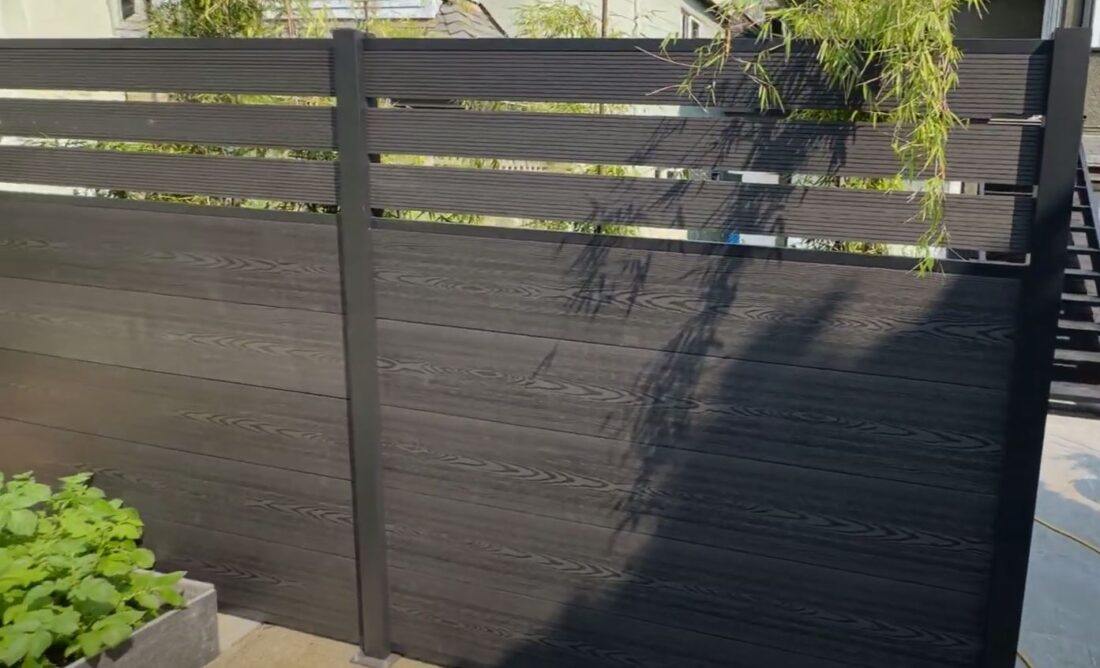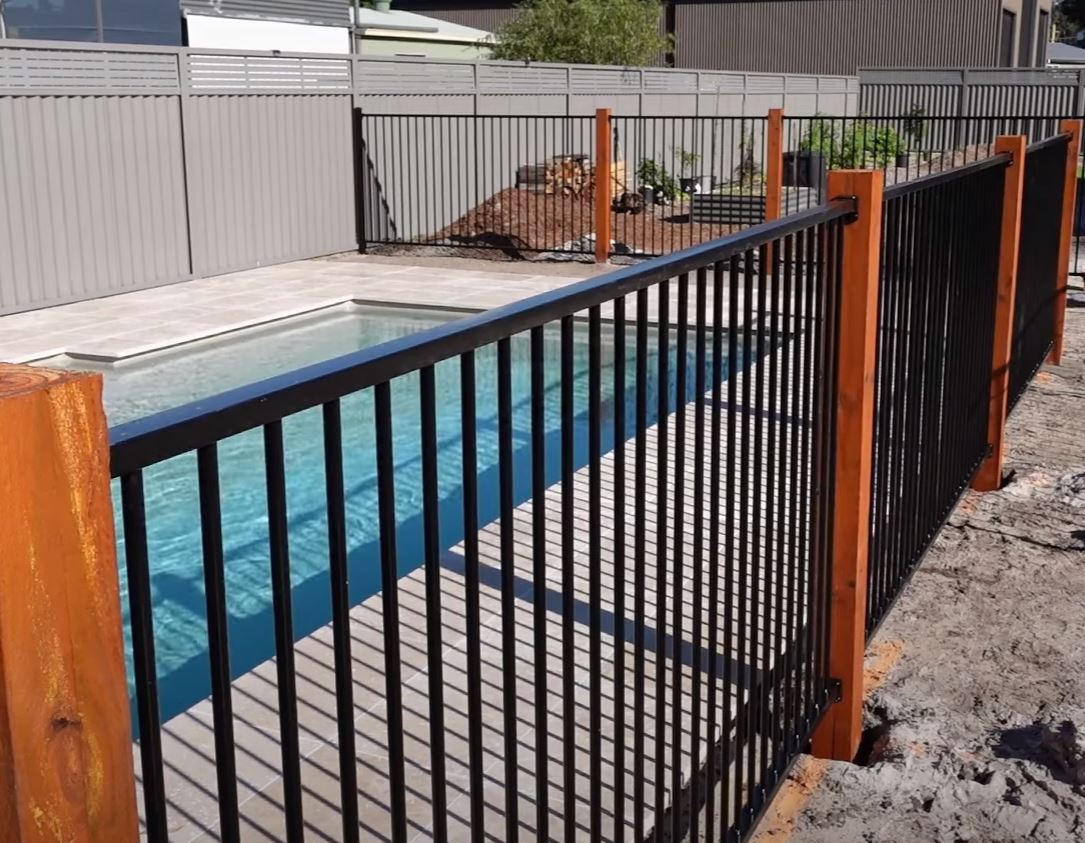Treatment Essentials for Timber Fencing
- Pressure-Treated Timber: This timber has been treated with preservatives under high pressure, making it resilient to fungal decay and termites. It’s especially recommended for areas with increased moisture exposure.
- Sealants: Wood sealants form a protective layer against moisture. Using a high-quality wood sealant ensures the timber remains impervious to the harsh salty air, repelling water and preventing decay.
- Regular Maintenance: Unlike inland areas, coastal regions like Long Bay require more frequent fence inspections. Regular maintenance, including cleaning, resealing, and checking for damage, goes a long way in preserving the timber’s lifespan.
Health and Safety Considerations
- Chemical Treatments: Some wood treatments contain chemicals harmful to humans if ingested or inhaled. It’s essential to use gloves and masks when applying and ensure the area is well-ventilated.
- Environmental Impact: Always opt for eco-friendly treatments and sealants. Harsh chemicals can run off with rain, affecting soil and groundwater quality.
Alternative Fencing Options for Coastal Regions
- Vinyl Fencing: This type of fencing is almost impervious to saltwater corrosion. It might not have the natural appeal of timber but offers excellent durability and requires minimal maintenance.
- Aluminium and Steel: Metal fences, especially those treated for rust resistance, can be suitable for coastal conditions. However, they do need periodic checks for signs of oxidation and corrosion.
- Composite Fencing: Made from a mix of wood particles and plastic, composite fences offer the look of timber without being as susceptible to coastal weather challenges.
Comparison of Fencing Types in Coastal Conditions
| Fencing Type | Durability | Maintenance | Aesthetic Appeal | Pros | Cons |
| Timber fence | Medium | High | High | Natural look; Customisable | Requires regular maintenance; Susceptible to rot |
| Vinyl fence | High | Low | Medium | Long-lasting; Minimal upkeep | Less natural appearance |
| Aluminium/Steel fence | High | Medium | Low-Medium | Durable; Rust-resistant variants available | Can corrode; Less warmth in appearance |
| Composite fence | High | Medium | High | Combines aesthetics and durability | Slightly costlier |
Coastal Exceptions and Special Considerations
While treatments are generally advised for timber fences in coastal areas, certain hardwoods like teak or red cedar naturally resist decay and might not need as aggressive treatment. However, sealing them can still offer added protection against the salty environment.
The Auckland Perspective
Auckland, with its diverse suburbs and coastal proximity, makes fence choice and treatment essential. Whether it’s the serene surroundings of Mt Eden or the vibrant community in Torbay, the right fence can not only uplift the aesthetic appeal but also ensure longevity in the face of Auckland’s coastal challenges.
In conclusion, while timber fencing is a preferred choice for many Aucklanders for its natural charm, it requires special treatments and considerations in coastal areas. For those seeking the best guidance and fence solutions tailored to Auckland’s unique climate and aesthetics, Quality Fencing Auckland stands as a beacon of expertise and quality.
Understanding Timber Fencing Treatments: Frequently Asked Questions
Why is timber treatment important for coastal regions?
Coastal areas, with their salt-laden air and high humidity, can accelerate timber deterioration. Timber Treatments provide protection against these harsh environmental conditions, prolonging the wood’s lifespan.
How does salt air affect timber fencing?
Salt from the air deposits on timber surfaces and attracts moisture. This continuous dampness can lead to premature rotting, fungal growth, and structural weakness in the fencing.
What is pressure-treated timber?
Pressure-treated timber undergoes a process where preservatives are infused deep into the wood under high pressure. This treatment enhances the wood’s resistance to decay, moisture, and insect attacks, making it ideal for coastal regions.
Are chemicals used in timber treatments harmful?
Some timber treatments contain chemicals that can be harmful if ingested or inhaled. It’s vital to use protective gear when applying these treatments and to ensure the area is well-ventilated. Always check labels and opt for eco-friendly options when available.
How often should timber fences be treated in coastal regions?
In coastal areas, it’s recommended to check and possibly treat timber fences every 1-2 years. The exact frequency might vary based on the specific treatment used and the fence’s exposure to the elements.
Can I treat my timber fence myself?
Yes, many timber treatments can be applied DIY. However, for optimal results and safety, especially with potent chemical treatments, it’s often best to engage professionals or follow manufacturer instructions meticulously.
What’s the difference between a sealant and a treatment?
While both provide protection, treatments often infuse or change the wood’s structure to improve its resilience. Sealants, on the other hand, create a protective layer on the wood’s surface to shield it from moisture and external elements.
Do all timber types require the same treatment?
No, different timber varieties have unique characteristics. Hardwoods like teak or red cedar naturally resist decay and might need less aggressive treatment than softer woods.
Are there alternatives to chemical treatments?
Yes, there are eco-friendly timber treatments available that use natural ingredients to provide protection to timber. These might be a good option for those concerned about environmental impact or chemical exposure.
How can I tell if my timber fence needs retreatment?
Signs like fading colour, a rough texture, visible mould or mildew growth, or wood that feels damp or spongy indicate it might be time for retreatment.
Does treating timber alter its appearance?
Some timber treatments can change the timber’s colour or give it a slightly different finish. However, many treatments are designed to be transparent, preserving the wood’s natural appearance.
If my timber fence has started rotting, can treatment save it?
If decay is in its early stages, treatment might halt further deterioration. However, if rotting is advanced, affected sections of the fence may need replacement. It’s crucial to address decay promptly and then apply protective treatments to prevent future issues.



